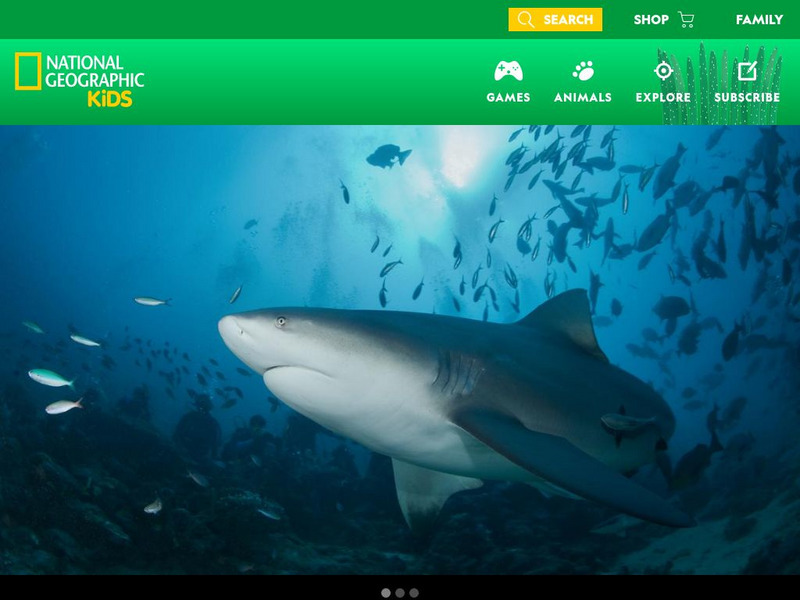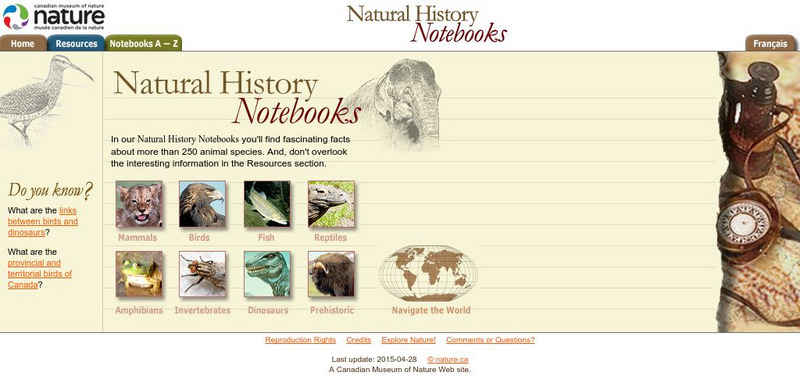Read Works
Read Works: Super Survival Skills
[Free Registration/Login Required] Students read about how different types of fish are able to defend themselves and survive in their environments. A question sheet is available to help students build skills in drawing conclusions.
TED Talks
Ted: Ted Ed: Why Are Sharks So Awesome?
Sharks have been celebrated as powerful gods by some native cultures. And today, sharks are recognized as apex predators of the world's ocean. What is it that makes these fish worthy of our ancient legends and so successful in the seas?...
Read Works
Read Works: Dead Zone
[Free Registration/Login Required] Students read about the "dead zone," an area in the Guld of Mexico where no fish can live due to pollution from fertilizer. A question sheet is available to help students build skills in cause and effect.
National Geographic
National Geographic: Crittercam Chronicles: Antarctica
Play a game where you explore three scenes in Antarctica and find different types of animals: south polar skua, crabeater seal, emperor penguin, ice fish, leopard seal, killer whale, krill, adelie penguin, and weddell seal. After you...
NOAA
Noaa: Ocean Science Careers
Study the different types of ocean related careers that are available and how you can make a difference without having to be a professional.
Smithsonian Institution
National Museum of Natural History: Ocean Planet: Biological Roulette: Alien Species
Click on the roulette wheel and see how some alien species were introduced into the United States and the effect they have had on our country. This is part of an archived Smithsonian exhibit.
Curated OER
Etc: Maps Etc: Distribution of Fish in North America, 1910
A map from1910 of North America showing the distribution of primary commercial fish in the region, including oysters, clams, sponges, turtles, shrimp, lobster, whales and seals. The map shows marine species as well the freshwater salmon...
Other
Wicked Diving: Napoleon Wrasse
Because this site belongs to a diving tour company rather than to an aquarium or museum, the information about the Napoleon wrasse is "up close and personal." Learn basic facts about these fish, but also learn how they react to humans in...
Other
Planet Ark: World Environmental News
Welcome to Planet Ark's daily Reuters World Environment News - the most comprehensive source of environmental news on the Net. To read previous news stories, please use the search engine below to find stories relating to any...
Georgia Aquarium
Georgia Aquarium: Blue Runner
Use this animal guide to learn the scientific name and discover the habitat, diet, reproduction, physical and unique characteristics of the blue runner. It can be viewed live on the webcam.
Other
Fishin for Facts Library
A comprehensive site that includes a wealth of information on whales, sharks, penguins and squid.
National Geographic Kids
National Geographic Kids: Animals: Bull Sharks
National Geographic site engages users with colorful photos and extensive facts about Bull Sharks. Be sure to click on the video link to view a short clip on these fascinating animals.
Globio
Glossopedia: Rockhopper Penguins
Rockhopper penguins live in steep, rocky places. The only way they can get around on land is to hop from rock to rock. Rockhoppers grow about 46 cm tall - almost as high as an adult's knee. They are the smallest of the crested penguins....
TeachEngineering
Teach Engineering: Caught in the Net
Bycatch can be defined as the act of unintentionally catching certain living creatures using fishing gear. A bycatched species is distinguished from a target species (the animal the gear is intended to catch) because it is not sold or...
Other
An Aquatic Adventure
In this WebQuest, you must pick a type of water habitat to create a new aquarium, choose three animals that can coexist in this habitat and design your own aquarium.
Curated OER
Marine Studies: Symbiosis
View graphics of a mimic octopus, frog fish, snake eel, hermit crab and clown fish. Discover how they form symbiotic relationships.
Curated OER
Marine Studies: Symbiosis
View graphics of a mimic octopus, frog fish, snake eel, hermit crab and clown fish. Discover how they form symbiotic relationships.
Curated OER
Marine Studies: Symbiosis
View graphics of a mimic octopus, frog fish, snake eel, hermit crab and clown fish. Discover how they form symbiotic relationships.
Curated OER
Marine Studies: Symbiosis
View graphics of a mimic octopus, frog fish, snake eel, hermit crab and clown fish. Discover how they form symbiotic relationships.
Curated OER
Marine Studies: Symbiosis
View graphics of a mimic octopus, frog fish, snake eel, hermit crab and clown fish. Discover how they form symbiotic relationships.
Curated OER
Marine Studies: Symbiosis
View graphics of a mimic octopus, frog fish, snake eel, hermit crab and clown fish. Discover how they form symbiotic relationships.
Curated OER
Marine Studies: Symbiosis
View graphics of a mimic octopus, frog fish, snake eel, hermit crab and clown fish. Discover how they form symbiotic relationships.
PBS
Nova: Deep Sea Beastiary
Get descriptions and pictures of numerous deep sea fish. Discover the adaptations that enable them to survive at tremendous depths.
Canadian Museum of Nature
Canadian Museum of Nature: Natural History Notebooks
This site from the Canadian Museum of Nature, a natural history museum, provides short information blurbs and fun facts on over 240 different common animals categorized by type (mammals, fish, reptiles, invertebrates, amphibians,...














